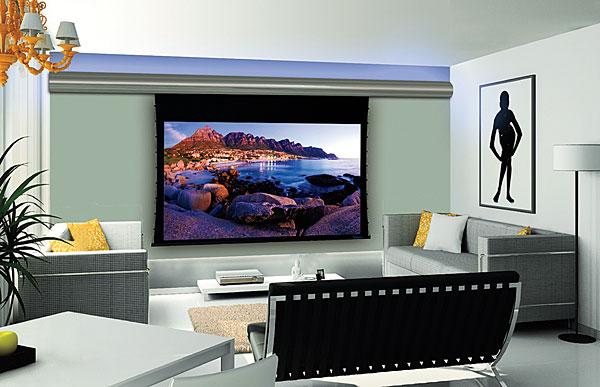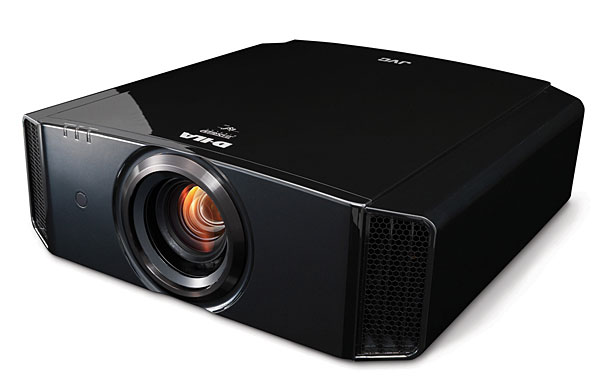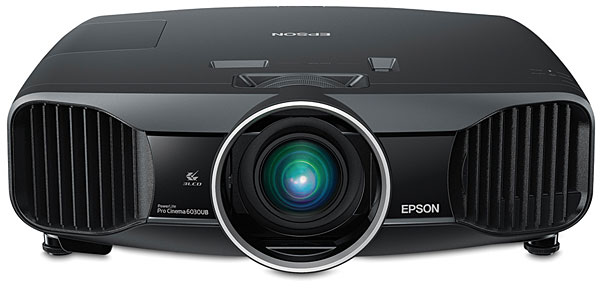Perhaps you could do a series of editor's picks for low, mid and high range setups?
The Wonderful World of Projection

The new 70- and 80-inch models are barely better, and they’re expensive. These days, for less than $1,000, you can get a decent-looking Full HD “TV” that’s over 100 inches diagonal. And, for less than the price of one of those 80-inch, room-dominating behemoths, you can get some of the best picture quality available anywhere on the market and have it nearly disappear when you’re not using it.
Yep, welcome to the wonderful world of projectors. An oft-overlooked niche of the TV world that has a vocal minority of adorers, shouting their love against a tide of archaic misinformation and outdated ideas of what a “TV” is.
Be careful, however. While this world is shiny and bright, you might never be able to go back to the drab world of mere flat panels ever again.
Customs and Immigration
So what makes projectors so great? To put it simply, it’s as close as you can get to having a movie theater in your home. In fact, it’s better. You can get a screen that’s bigger, to your eye, than what you see from many of the seats in a theater, and have an experience that’s more fully optimized for your viewing and listening preferences. There are no annoying people with their cell phones and inexplicable talking (well, at least that you didn’t personally invite). You can pause the movie at any time and take a bathroom or kitchen break.
The immersion factor of a projector is much better than a TV. With so much of your field of view taken up by the screen, there’s nothing to distract from the projected fictional world. There can be less eye fatigue as well, because you’re not staring at a tiny, bright object surrounded by blackness (instead, you’re looking at a huge image, more like real life).
There’s also nothing quite like the “wow” factor of an enormous screen filled with greater-than-life-sized characters from your favorite TV show or movie.
On This Land, It’s All About the Chip
There are three imaging technologies used
in today’s consumer projectors: DLP, LCD, and LCOS. DLP stands for Digital Light Processing and uses tiny mirrors—one for each pixel—to reflect light toward the screen. LCD, liquid crystal display, is basically the same technology used in LCD TVs, with each pixel a tiny window that can be adjusted
on the fly to allow more or less light to pass through. LCOS, or liquid crystal on silicon, is sort of a hybrid between the two, with liquid crystal on top of a mirrored layer.

How they work is less important than how they perform and what they cost. There is no hard-and-fast rule about pricing for each technology. But, generally speaking, in the low end, you’ve got LCDs and single-chip DLP; in the midrange, you’ve got DLP, LCD, and LCOS; and at the high end, just LCOS and three-chip DLP.
To repeat what will become a common refrain throughout this piece, there’s no simple way to tell how good a projector will look based on its technology. In the past year, I’ve reviewed projectors that cost $400 to over $4,000, and shortly before that, more than one projector that cost over $20,000. So I’m comfortable making a few generalizations, but don’t consider these hard-and-fast rules by any stretch.
In the low end, DLP looks great. Some of the sub-$500 projectors I’ve reviewed I’d happily have in my home. The contrast ratios are decent, there’s little to no motion blur, generally very little input lag (these latter two factors make them great for gaming), and color tends to be quite good. While not as bright as the LCD arc welders from Epson, DLPs tend to be brighter than many more expensive projectors. In the $1,000 and under range, DLP is hard to beat.

In the next solid step up, in what we’ll call midrange projectors from, say, $2,000 to $8,000, DLP loses out to LCD and LCOS. Midrange DLP projectors don’t look radically different from their cheaper counterparts, while LCD-based projectors look much better than their little brothers. LCOS is the real one to check out here, though, as its native contrast ratios are almost always better than any other technology. Remember, contrast ratio is the most important factor in any display’s picture quality; side by side, a projector with a higher native contrast ratio will look better than one with a lower reso- lution (presuming no other major issues).
In the high end, it’s really Sony’s 4K LCOS offerings versus a smattering of expensive three-chip DLP projectors. I have seen some incredible-looking three-chip DLP projectors (especially some lit by LEDs instead of a traditional projection lamp, more on that later). They also offer some excellent light output. But big screens is where 4K resolution really becomes useful. Even without a lot of content available, if you’re looking to spend uber money, 4K is probably worth considering for the extra detail potential.
The Islands of Pricing
As mentioned before, this is tough. There’s not nearly a simple spend-more, get-more ratio with projectors. Yes, a $3,500 projector generally looks better than a $1,000 projector, but the difference between $500 and $1,000 is very small. Does a $25,000 projector look 10 times better than a $2,500 one? Arguable. It’s more about specific projectors looking good or bad.
Figure out your budget, that’s the first step. If you can spend around $4,000, it’s possible a $3,500 PJ is a better option than a $4,500 one. Do you need to spend five figures to get a great-looking projector? Not at all. In fact, the old adage of needing to spend that kind of money to get lots of light for a truly epic screen size is no longer true, either. Many low- and midrange units offer tremendous light outputs. The brightest projector I reviewed last year was under $1,000.
- Log in or register to post comments


You really should have mentioned the downside of choosing a non-tensioned motorized or pull down screen, that being the fact that they will develop waves over time, which may drive some people crazy when the camera pans during a movie. The effect is distracting, looks terrible and takes away from the suspension of disbelief that we are all after during a movie. If you have to go the drop down screen route I would recommend buying a tensioned motorized or pull down screen as opposed to a non-tensioned one.

Absolutely agree with Mr. Weflen's post. I would love to get a projector but guidance is needed. An informative series with different projectors and screen combinations would be extremely helpful. Which projectors have razor sharp images(Sony, JVC, Epson)? What screens are recommended(Carada, Stewart)? Are aforementioned projectors good for gaming? I realize there are many different considerations but an article would be great. Thank you.

I like the above projectors just like the Sonic menu with prices because these projectors are very shiny and attractive. Much amazed!





















































